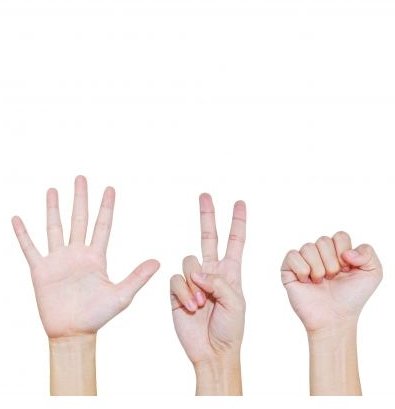Conscious Body Language - Hand Gesture Meaning in Different Cultures & Languages
The voice and body are both commonly used to speak to others; neither form of communication is universal. The following hand signs are examples of the varying meanings of commonly used gestures.
Thumbs Up
In the Unites States the thumbs up is used as a sign for approval and success, whereas the thumbs down conveys the opposite.
In Europe the thumbs up is also a signal for “goodbye,” or a greeting in passing, especially among young people.
The thumbs up sign in Middle Eastern countries, Iran, Iraq and Thailand, is an extremely obscene gesture, equivalent to flipping the finger in Europe.
In India, the thumbs up, combined with a wagging of the fist means, “I doubt that will work.”
A thumbs up is an important sign in scuba diving, where it means, “stop the dive and ascend.”
V Sign
Another letter formed by fingers is the “V.” Legend has it that the V sign originates from the 100 Year War, when the French vowed to cut off English longbowmen’s middle fingers, but as the English won the war, they raised their fingers in the V sign to show that the shooting fingers were still intact.
Making the V sign with the palm turned inward is – particularly in the UK – an offensive sign, very similar to flipping the finger.
It was Winston Churchill, after World War II, who first used the V sign for victory and success, but with the palm turned outward. Since then it has been used in that context. In the US, it is generally a sign of success, often made with both arms raised.
The V sign is also used to poke fun at someone, when secretly made behind a person’s head, making him or her look like a bunny.
Horizontal Slash
A horizontal slash with one hand, used in a speech, signifies underlining a point. Used on its own, the gesture often means the unspoken equivalent of the Spanish and Italian word “basta” which means, “Stop it, I have had enough!”
Welcoming Hands
The hands are often used to welcome a person into the home. In the United States and Southern Europe, holding the arms out and holding the hands open and pointed upwards is a welcoming sign. In Asia, holding the hands together is a welcoming sign.
Flipping the Finger
Flipping the finger, also known as flipping the bird, is a sign of extreme contempt. It is executed by raising the middle finger and making a slight poking motion. In Sri Lanka and other Asian countries, the index finger is used instead, but the meaning is the same.
Cross-Cultural Communication

When a language barrier exists, hand gestures and body language may be the only available modes of communication. In an effort to avoid sending messages that could be misinterpreted, one should minimize the use of gestures unless it is known that the meanings are interpreted the same way by both parties. When visiting another country, observe how the locals communicate and learn by example.
References
- Tools for Diagnosing and Mediating Cultural Misunderstandings: North Western University
- Thomas, David C; Cross-Cultural Management: Essential Concepts Edition 2; SAGE Publications; April 2008
- Image: Rock Scissors Paper - Hand Posing by Kittikun Atsawintarangkul under CC BY 2.0
- Image: Business Man Giving Thumbsup by photostock under CC BY 2.0
- Pauwels, Anne; Cross-Cultural Communication in the Health Sciences: Communicating With Migrant Patients; Macmillan Education Australia; January 1995
This post is part of the series: Conscious and Involuntary Body Language
50-60% of communication is conducted by body language, whether conscious through gestures or involuntarily through reactions. Learn about differences, similarities and interpretations according to countries and cultures.
